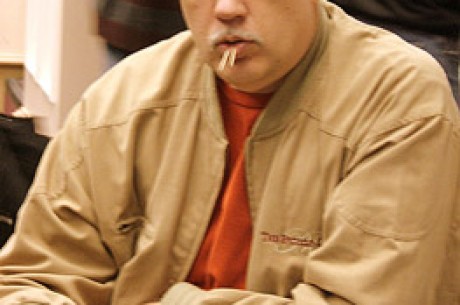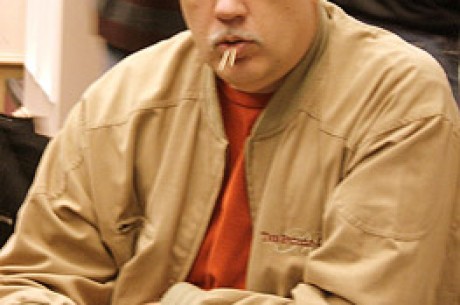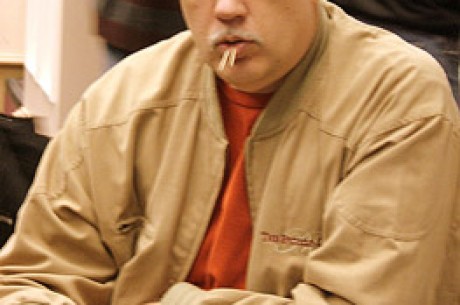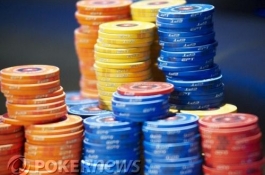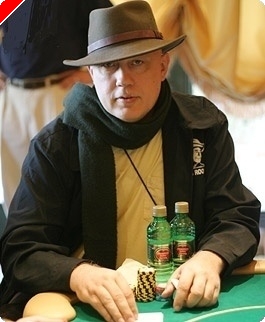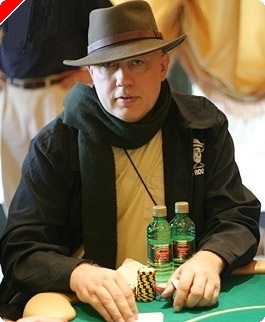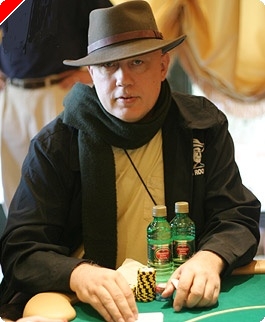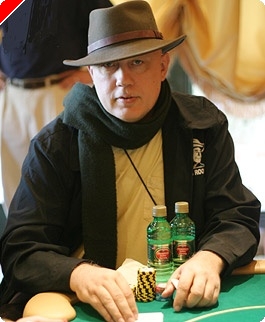Inside the Poker Tour - 18
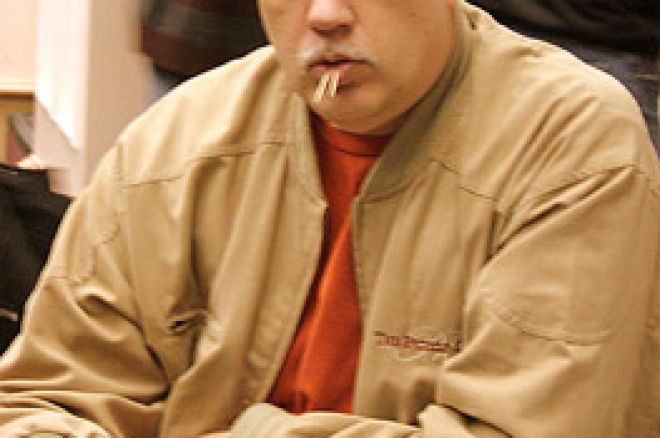
Some thought about no limit tournaments from the one that I just played yesterday at the Bike [Legends of Poker, 2005 edition]. So much of poker is perceived to be the sexy version shown on television when the reality is it often driven by other factors that can be explained by tournament structures with simple mathematics.
This one was a 340 buy-in with unlimited 300 dollar re-buys and two optional re-buys at the end of three 40 minute rounds. For each 300 you got 500 in chips and the blinds progressed like this 5-10, 10-15, 15-25, 25-50, 50-100, 100-200, 100-200 w 25 ante, 150-300 w 50, 200-400 w 75, and 300-600 w 100.
In this progression there are two 100% double ups (25-50 to 50-100 and 50-100 to 100-200), 100% increases of costs are always incorrect from a poker purist's viewpoint as this means that at the end of a particular time limit that one half of a player's chips are taken away. In this case that happens two time limits in a row, effectively quartering the amount of chips the player holds just prior to the limit increases. This is not designed to make a professional poker player happy; however there are other very important considerationsone of these is what happens as the tournament approaches the money. If the increases are modest at this point then a tournament is perceived to have plenty of 'play' in it. An example of the old 'unfair' structure would be one that accelerates as you near the money and gives a full 100% increase or more such as going from 500-1000 with an ante of 100 to 1000-2000 with an ante of 200 to 2000-4000 with an ante of 500[!] which is a structure that has unfortunately been seen on more than one occasion. A fair structure would be one that goes something like 800-1600 with a 100 ante to 1200-2400 with a 200 ante, to 1500-3000 with a 400 ante, to 2000-4000 with a 500 ante. This is great as a player but of course it keeps the tournament staff there for a few extra hours and rewards good poker players instead of bad players, beginners, and maniacs.
On the other side of this I will share my view of how the host can look at it, or should look at it. The antiquated structure had an understandable beginning as it came from an era where there was first only one tournament a year (the World Series of Poker) and it and its backers have failed to adjust to the modern tournament era. The bad structures happened because when players came to an event once, or a few times a year, they wanted to be able to play for a while which starting slowly encouraged. When the tour added a second, then third stop...with at some point a proliferation of events happening until now we often have the choice of three different events on many days without counting low buy-in options that are often available at many venues, "second chance" or evening events at most premier events, as well as multi and single table events offered by a plethora of online sites, then the situation should be viewed differently.
This, along with an enormous expansion of participants in each field, has radically altered what is acceptable to most players. Most of us do not care if the host structures an event so that there are multiple double-ups at the early levelsthis promotes the idea that you either get some chips or you walk away. Not having to suffer through long and meaningless rounds is not that disconcerting for the professional poker player when the next event is just a few hours or at worst the next day away. The positive part of the equation for the casino is that many more players go broke early on and are released from their tournament "prison" and returned to 'live' action on the main casino floor, where the host has the chance to showcase their presentation and make money off the drop, rake, or time that the live games produce. So if our choice is whether one speeds up the structure of the tournament early or late we will likely all vote for making it faster early.
Well I have already spent half of this column talking about structures so I will have to talk about other matters related to that in a future column and move on to actual hands as they played out in my hands in this no-limit holdem tournament.
I began a run to the winner's circle with the following hand; there are well over 200 runners left and we are at the 100-200 with 25 antes level when the cutoff limps for 200 and I look down at Ks9s and call from my stack of 3300, the big blind checks and the flop comes 4s4c3c and the big blind who is a regular tournament player that I know now laughs and smirks at the flop. What could that mean? Check, check, and I bet 500 off the button, seeking definition from my strong position. The big blind calls right away and the cutoff mucks. The turn is the Jc. He checks. Now I could bet again here, 1000 or so and hope to take the pot down but I have no extra chips on my remaining stack to cast out in a bluff without having a lot of confidence that the bet will win the pot. In this particular case I think the big blind has a very large hand or no hand, such as 65, but in either case has enough maniac blood that he might make a large check-raise and so make me lay down my hand while my stack has been devastated by .... me! The river comes the 9d and he bets a stack of 100 dollar chips, half his stack but most of mine. If I call and lose I will have only 600 left, but I am going with the read I mentioned above and feel I have to call. I do call and he shows 52 for a busted straight draw and the nut nothing.
From here I build my stack up to 11,400 in the next half an hour when test number two comes along. An aggressive player raises the big blind of 300 to 900 from midfield, the lady behind him calls the raise and the player on my right moves all in for 9000 from the button. He has been playing rather fast as well and I decide that I should call with my 10-10 and do so, both players with about 7,000 behind me fold. Button has AKoff and it comes KQ5 rainbow, and I am reconciled to playing with a short stack, but hold it, the turn is a 10! and I add 11,500 to my stack.
One round later the first position player raises it the minimum and two others call. I am among the tournament chip leaders now with 26,000 and I call from the big blind with 9h4h. The flop comes Kh6h5d and we all check. The turn is the 5h and the little blind moves all-in instantly for 11,800 (a dubious play on his part, for sure). I have a flush but it is far from the nuts and the board is paired as well. Let us add to that the fact that multiple players with about 10,000 in chips each are behind me and have yet to act. I imagine that his exact holding is the K of spades and Q of hearts. As he determines that I am likely to call him he begins to try to talk me out of calling. Having a lot of chips makes the call even easier than it might be if my tournament life were on the line. The players behind me muck and he shows KsJs and it falls a harmless 4s on river and I surge past 40,000 and hold the chip for all but a few hands the rest of the tournament as over a 100 players get eliminated.
An interesting note is that I held AK only once the whole tournament, re-raised with it and got a walk, held the aforementioned 10-10 which I was very lucky with, and had only one other premium starting hand!!! The KsKh that I made it 3,000 with over a big blind of 1,000 off a stack of 90,000 when we were 25 handed and the big blind moved all-in with Ah8c for a total of 13,000 and after 4 blanks the river brought an Ace. Grrrrrr. Oh well into every life a little rain must fall!
I hope to talk about the math of tough calls in the big blind next time.
Play good....and get lucky!
Ed Note: Do you own a Mac? You can play online anytime you want at Pokerroom.com

